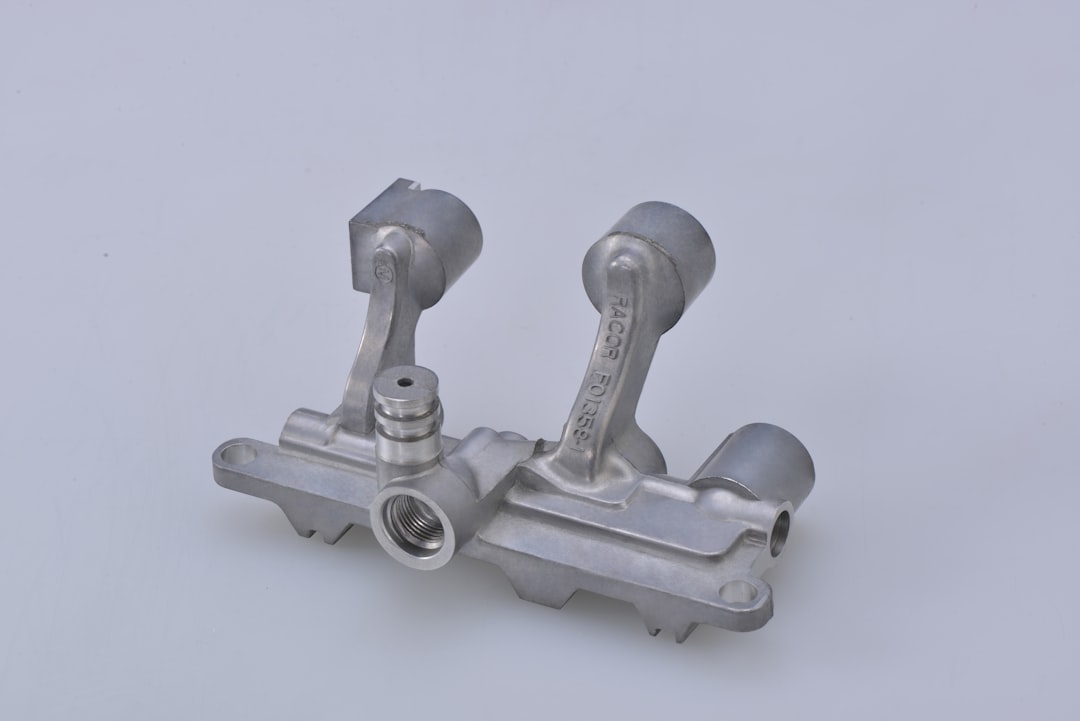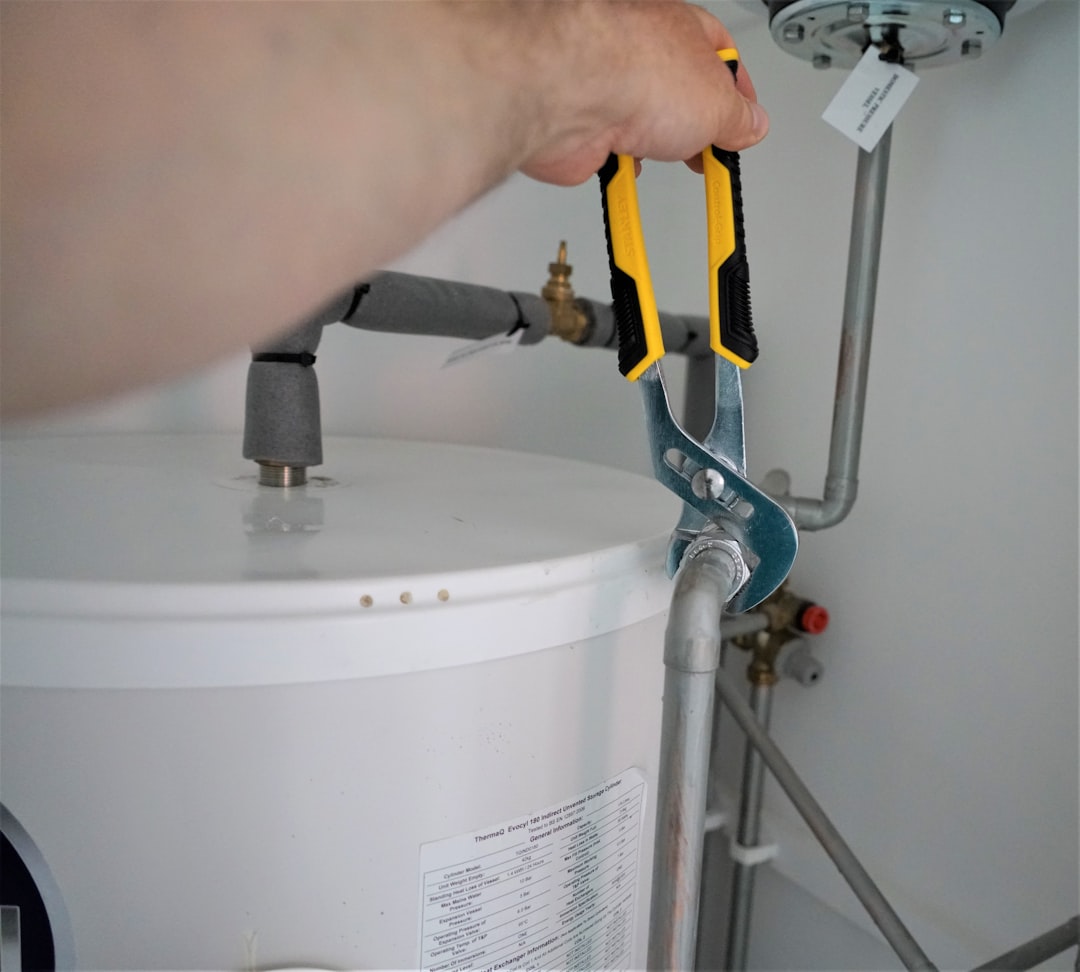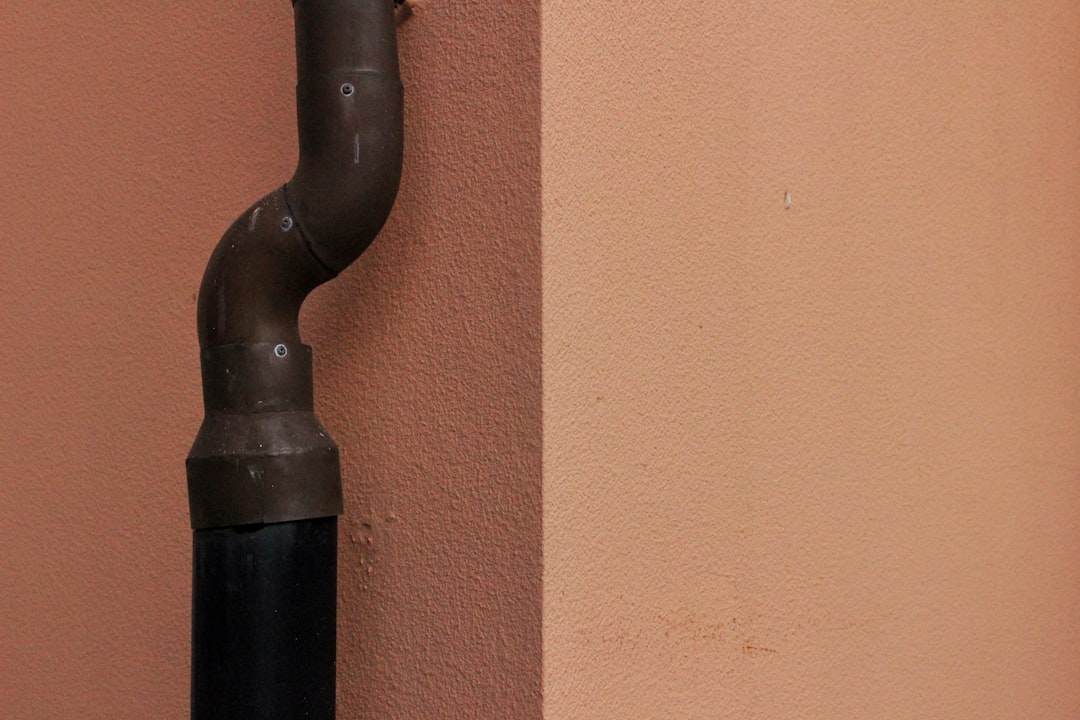

Engage prospects with a scan and streamline customer engagement with FREE QR code marketing tools by Sona – no strings attached!
Create a Free QR CodeFree consultation

No commitment

Engage prospects with a scan and streamline customer engagement with FREE QR code marketing tools by Sona – no strings attached!
Create a Free QR CodeFree consultation

No commitment
In today’s digitally driven marketplace, used plumbing fixture suppliers face persistent obstacles when bridging the physical and digital divide. Buyers now demand instant access to inventory, rapid response times, and clear value at every step. Traditional methods like printed catalogs and manual intake forms rarely capture intent-rich prospects who research anonymously or outside business hours. The result is predictable: missed opportunities as high-value leads slip through undetected, leaving teams with incomplete CRM data and diminished pipeline visibility.
QR codes offer a practical way to close these gaps by transforming physical assets such as showrooms, product labels, packaging, and point‑of‑sale displays into actionable digital touchpoints. For suppliers specializing in plumbing fixture wholesaling, surplus inventory, and high-turnover refurbished stock, QR integration surfaces more of the right inventory to a wider audience, streamlines lead capture, and connects offline engagement events to online actions without introducing friction. This article explores how to deploy QR codes strategically to mitigate revenue leakage, unlock growth opportunities, and deliver the transparency and speed today’s buyers expect.

For many suppliers, a constant frustration is the volume of showroom visitors or catalog readers who browse products but never make it into the CRM. Silent interactions can represent significant lost revenue when not tracked or followed up. Replacing static product tags and paper order forms with QR codes empowers buyers to self-identify, access deeper product content, and initiate a trackable digital journey in seconds. See QR marketing best practices.
A modern lead-capture setup combines dynamic QR codes and purpose-built landing pages with CRM automation. This approach brings together what historically lived apart: the in-aisle experience and your digital pipeline. It also replaces outdated analog processes like manual sign-up sheets and clipboards with a faster, cleaner pathway to qualified conversations.

The industry’s reliance on physical touchpoints such as store aisles, events, and labeled stock often leads to a lack of visibility into who is engaging with which products. Without a digital bridge, leads remain anonymous and virtually invisible to sales teams. Suppliers are left to depend on customers to self-identify through staff interactions or manual forms, both of which are inconsistent and prone to delays. QR codes simplify this reality by connecting offline curiosity to online action instantly.
Speed and simplicity are critical in a category where buyers often shop on tight timelines, manage multiple jobs, and expect clarity on specs, compliance, and availability. With one scan, a contractor can access compatibility information, a property manager can check quantities across locations, and a homeowner can compare finishes. Dynamic QR codes add flexibility by letting you update destinations as offers, pricing, and compliance needs evolve without reprinting materials.
Practical examples include QR codes on storefront displays for after-hours contact collection, item tags for rapid product comparison, and packaging inserts that prompt instant reviews or warranty registration. Each scan generates data points that inform smarter follow-up and better audience scoring.

Suppliers frequently struggle to maintain context across diverse marketing materials. Misaligned print and digital assets and single-use codes leave buyers at a dead end. Modern QR implementations correct this by using formats that fit the task and a central platform to manage changes, track results, and retire codes that are no longer needed.
The most effective QR formats in this vertical support quick access to technical details, fast lead capture, and low-friction reorder experiences. Pair each format with a destination built for the job, and ensure that dynamic codes are used when information changes often, such as pricing or availability.
With a centralized QR management system like Sona QR, suppliers can generate any of these formats, update destinations in real time, and monitor performance in one place. This reduces the operational burden of code updates, decommissioning, and analytics while keeping campaigns coherent and measurable.

Growth often gets left on the table when suppliers cannot track and act on physical-to-digital interactions. Deploying QR codes strategically turns every piece of print real estate and every product surface into a measurable entry point to your pipeline. The key is to map placements to buyer intent and to give scanners a reason to act right now.
Look for the highest traffic and highest intent surfaces first. These include product displays where decisions are made, paperwork that buyers keep, and channels where follow-up is likely. Each placement becomes an experiment for identifying which offers and content drive offline-to-online conversion.
Each of these placements should be paired with a clear call to action and a mobile-friendly destination to maximize conversion and insight capture.

Common pain points in this category include manual lead collection, incomplete tracking, and slow follow-up. QR-enabled workflows fix these problems by meeting buyers where they are and guiding them to the next step. Below are practical use cases that align with typical buyer interactions in this vertical.
These use cases also create a two-way value exchange. The buyer receives instant clarity or convenience, and the supplier gains structured data that informs revenue-focused planning.
Every QR code scan is an intent signal, a concept expanded in Sona’s blog on intent data. When you deploy multiple codes across touchpoints, you create a mosaic of behavior that reveals who is in the market, what they want, and when they prefer to engage. This makes it much easier to craft relevant follow-up, allocate sales resources efficiently, and drive revenue where it is most likely to close.
Segmentation works best when it mirrors how buyers actually shop. In this industry, that means recognizing distinctions like contractors vs. homeowners, salvage hunters vs. premium renovators, and pre-purchase researchers vs. post-purchase reorders. Tagging and routing these audiences automatically creates a more responsive, profitable funnel.
With Sona QR, each code becomes a smart entry point that captures data automatically and keeps audience segments up to date without manual work.
Used plumbing fixture suppliers frequently market across print, in-store signage, trade events, and local advertising. Attribution is difficult when these channels do not feed a single system. QR codes act as the connective tissue that unifies offline and online efforts, providing a direct path from a printed piece or product tag to a measurable digital action.
This integration matters for more than reporting. When every code points to a purposeful next step, you shorten the time between initial interest and a sales conversation. The result is better customer experience and a more efficient pipeline.
QR codes serve as the offline onramp to your digital marketing engine. A platform like Sona QR helps manage all codes centrally, monitor performance, and sync scan data to your CRM and ad accounts for immediate action.
Launching a QR program does not require a full rebuild of your marketing stack. Start with a single, high-value use case and expand as you learn. The steps below will help you define goals, pick the right code type, design for scannability, deploy across your most promising surfaces, and optimize based on results.
Before you begin, map your offline touchpoints and the buyer behaviors you want to encourage. For used plumbing fixture suppliers, these typically include in-aisle product exploration, quote requests, bulk reorder submissions, and post-purchase registration. Create a short list, then assign a clear call to action and a destination for each.
Begin by selecting a use case that aligns with a measurable business outcome. For example, capture earlier-stage leads who scan for price, specs, or compliance on high-turnover fixtures, then route them to a pre-filled quote request. Alternatively, focus on post-sale reorders by adding QR codes to packaging that open a one-click reorder form tied to the product’s SKU.
Clarify what success looks like in concrete terms. Define targets such as scan-to-lead conversion, time from scan to first sales contact, and incremental revenue from QR-driven opportunities. Choose one or two metrics to make learning faster and optimization simpler.
Decide whether to use static or dynamic codes based on how often your information changes and how much insight you need. Static codes can work for fixed destinations such as warranty PDFs or a contact page. Dynamic codes are better for anything tied to inventory, pricing, or offers that evolve.
Dynamic codes also enable attribution, retargeting, and destination changes without reprinting. If you want to monitor scan volume by placement, segment audiences by product interest, or test multiple offers, dynamic codes via Sona QR are the way to go.
Design for clarity and trust. Include your logo inside the code border, add a concise call to action, and ensure adequate contrast and quiet space around the code. Make the CTA specific to the buyer’s context, such as Scan for today’s price, See available finishes, or Get an instant quote.
Validate scannability under real conditions. Test multiple devices, distances, and lighting scenarios in your showroom and at events. Print at a size appropriate to the scanning distance, and avoid placing codes on highly reflective surfaces that can interfere with camera focus.
Roll out your first batch of codes where intent is strongest and volume is meaningful. Prioritize bulk bins, premium fixture displays, checkout counters, and trade mailers that reach commercial buyers. Pair each placement with a destination tailored to the likely buyer behavior at that moment.
Document each placement in your QR platform. Label codes by channel and context so you can measure which surfaces, messages, and products produce the best results. This discipline pays off during optimization because you will see precisely what to scale or refine.
Use detailed scan analytics by channel, fixture, and user type to guide budget allocation and creative testing. Watch for drop-off points between scan and conversion, then adjust landing pages, forms, and CTAs to reduce friction.
Iterate toward the best combinations of placement, message, and destination. A/B test offers, add or remove form fields, and experiment with incentives. With Sona QR, you can update dynamic destinations quickly and keep all codes live while you test improvements.
A recurring headache in this vertical is tying offline engagements to revenue outcomes. Without a clear line of sight from scan to sale, it becomes hard to justify marketing investments, forecast pipeline, or prioritize accounts. QR codes, combined with a connected analytics stack, solve this by creating closed-loop attribution across the buyer journey. For deeper context, see offline attribution.
Beyond raw scan counts, the real value lies in connecting scans to funnel progress. When scan events enrich CRM records and trigger workflows, your team can act faster on high-fidelity signals such as repeat scanning of the same product line, event attendance, or post-purchase interactions that indicate upsell potential.
Sona QR captures real-world engagement, and Sona.com converts that engagement into actionable insights. Together they make QR codes an integral part of your performance marketing and revenue operations strategy.
Scaling success with QR codes requires a mix of disciplined tracking, thoughtful design, and on-site enablement. The goal is to make every scan both valuable to the buyer and legible to your systems so that follow-up is timely and relevant. Small process improvements often lead to outsized gains in conversion and pipeline velocity.
Prioritize the tips that match your most common media, such as aisle tags, packaging, trade mailers, and delivery paperwork. Then layer in automation so critical signals never sit idle while interest fades.
QR codes are reshaping how suppliers capture demand, enable self-serve research, and drive repeat orders. The most successful programs combine clear CTAs, helpful content, and automation that turns every scan into a next step. A few real-world patterns illustrate what works.
These examples are adaptable across company sizes. Whether you operate a single discount showroom or a regional network of salvage and refurbished inventory centers, the same principles apply: place codes at critical decision points, point them to useful destinations, and measure what happens next.
There is a science to maximizing QR performance in used plumbing fixture environments. Common pitfalls include generic CTAs, codes placed where scanning is awkward, and destinations that do not align with buyer intent. Avoid these missteps and you will see a meaningful lift in scans, leads, and revenue influence.
A little rigor goes a long way. Treat every QR placement as a testable hypothesis, then iterate quickly based on what the data shows. The following guidance can help.
QR codes have become an essential bridge between physical stock and digital systems for used plumbing fixture suppliers. They eliminate lost leads, accelerate conversions, and connect every in-person engagement to a measurable digital outcome. When paired with analytics and CRM integration, each code becomes a high-leverage entry point that turns formerly anonymous interest into visible, actionable demand.
Suppliers who embed QR touchpoints strategically will overcome persistent barriers to growth like anonymous showroom traffic, delayed lead capture, and disconnected campaigns. By connecting scan activity with CRM workflows, retargeting, and detailed attribution, you can unlock the full potential of every in-person interaction. Start small with a single high-intent use case, then scale what works across your environment.
With Sona QR, you can generate and track your first codes in minutes, manage dynamic destinations centrally, and sync engagement to your CRM for real-time follow-up. Add Sona.com for identity resolution and multi-touch attribution, and you will connect scans to revenue confidently. Turn every physical encounter into a data-rich online opportunity and reach buyers at the moment they are most ready to take action. Start creating QR codes for free.
QR codes have transformed the used plumbing fixture suppliers industry from static listings into dynamic, measurable growth opportunities. Whether it’s attracting new buyers, enhancing the customer journey with instant access to detailed product information, or streamlining inventory verification, QR codes replace cumbersome processes with seamless, mobile-friendly interactions that capture real-time engagement data to maximize every sales touchpoint.
Imagine customers instantly accessing product specs, installation videos, and pricing right from the fixture itself—eliminating guesswork and accelerating purchase decisions. With Sona QR, you can create dynamic, trackable QR codes in seconds, update details on the fly without reprinting, and link every scan directly to sales outcomes. No lost leads, no outdated info—just smarter, more effective customer connections.
Start for free with Sona QR today and turn every scan into a confident customer, a faster sale, or a long-term relationship.
The article does not list specific suppliers but suggests that suppliers who use digital tools like QR codes to connect physical inventory to online engagement provide better service and visibility.
Reliable suppliers offer instant access to inventory, rapid responses, clear product information, and use technologies like QR codes to ensure seamless lead capture and transparent buyer engagement.
Using used plumbing fixtures offers cost savings, access to surplus and refurbished stock, and the ability to quickly verify specs, compliance, and availability through digital tools.
Quality can be ensured by choosing suppliers who provide detailed product specs, compatibility charts, real-time availability, and clear compliance documentation accessible via QR codes.
The article recommends using QR codes on packaging and displays to prompt instant reviews and warranty registration, which can help gather customer feedback and testimonials.
QR codes bridge offline and online interactions by providing instant access to inventory, product details, lead capture forms, and enable tracking of buyer intent to improve sales and follow-up.
Useful QR code formats include web links to product pages, forms for lead capture, vCards for contact sharing, app downloads for catalogs, and Wi-Fi access codes for events or showrooms.
By deploying unique QR codes for different buyer journeys, tagging audiences by use case and product category, tracking location and timing, and syncing data with CRM and ad platforms.
Best practices include adding QR codes to brochures, social media prompts, direct mail, digital signage, and events, all linked to mobile-friendly content and tracked centrally for performance.
Start by selecting a measurable use case, choosing the right QR code type, designing and testing codes for scannability, deploying across high-impact channels, and tracking results to optimize.
Tracking QR code scans with detailed context helps identify high-interest products and buyers, measure engagement by channel, enable real-time sales alerts, and attribute revenue confidently.
Avoid generic calls to action, placing codes where scanning is difficult, and linking to irrelevant destinations; instead, use specific CTAs, logical placements, and align codes with buyer intent.
Use cases include dynamic product tags linked to specs, trade event lead capture, packaging that enables reorders and warranty registration, and community mailers with localized offers.
Buyers gain instant access to product specs, pricing, compliance information, installation videos, reorder forms, and contact details, all with a quick scan that fits their busy schedules.
Use Sona QR's trackable codes to improve customer acquisition and engagement today.
Create Your FREE Trackable QR Code in SecondsJoin results-focused teams combining Sona Platform automation with advanced Google Ads strategies to scale lead generation

Connect your existing CRM

Free Account Enrichment

No setup fees
No commitment required

Free consultation

Get a custom Google Ads roadmap for your business






Launch campaigns that generate qualified leads in 30 days or less.
